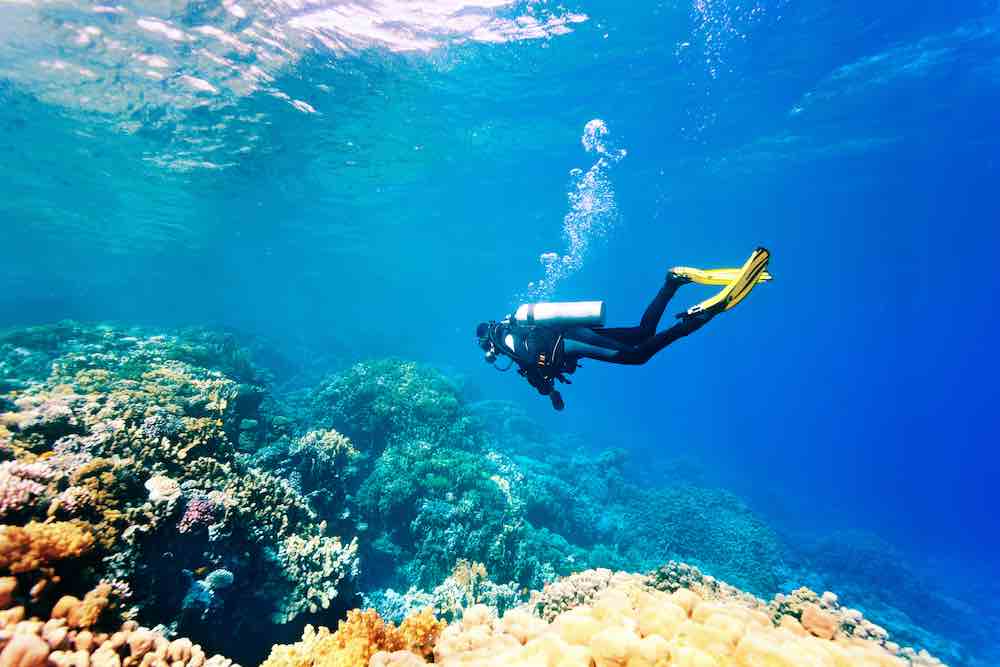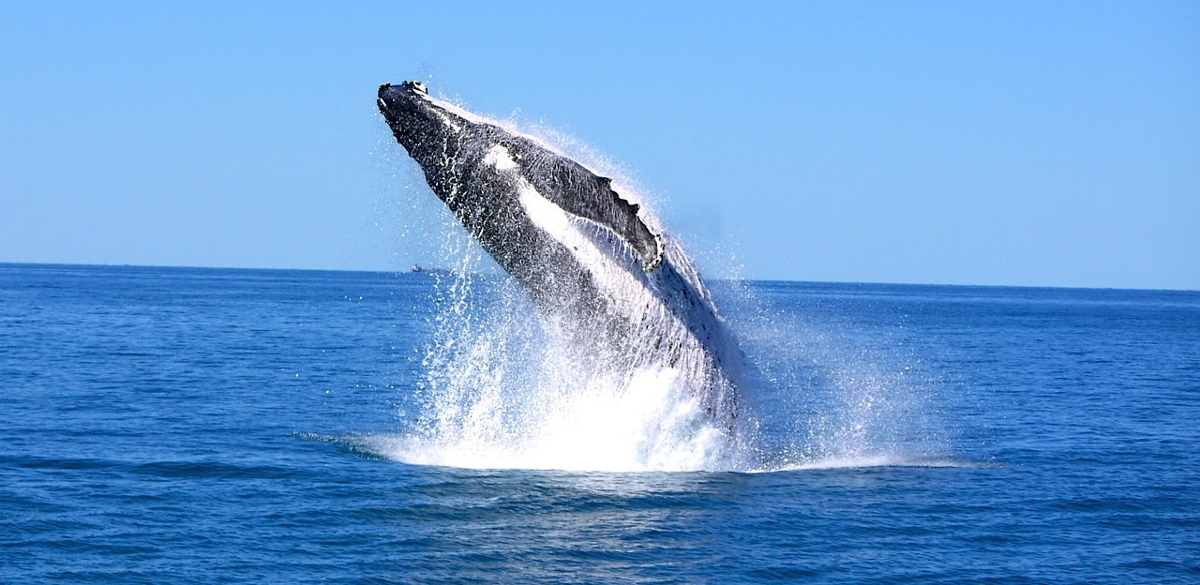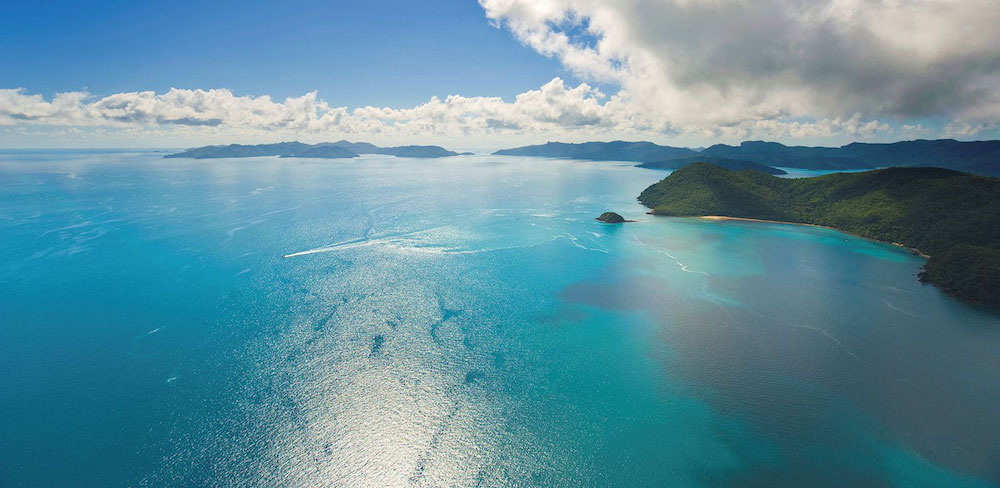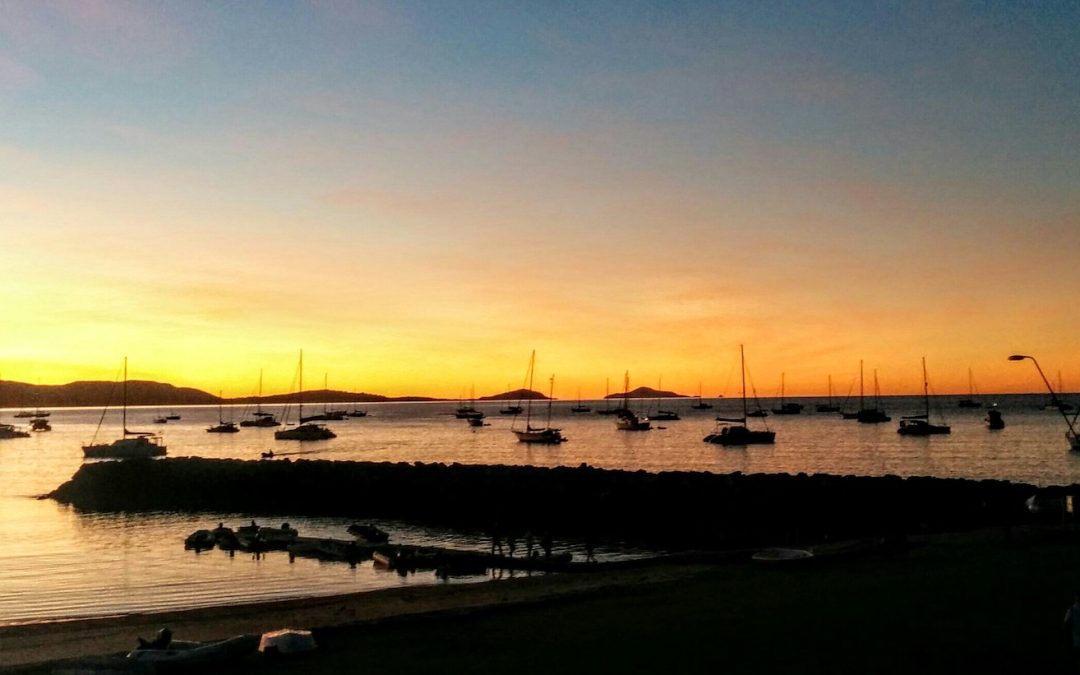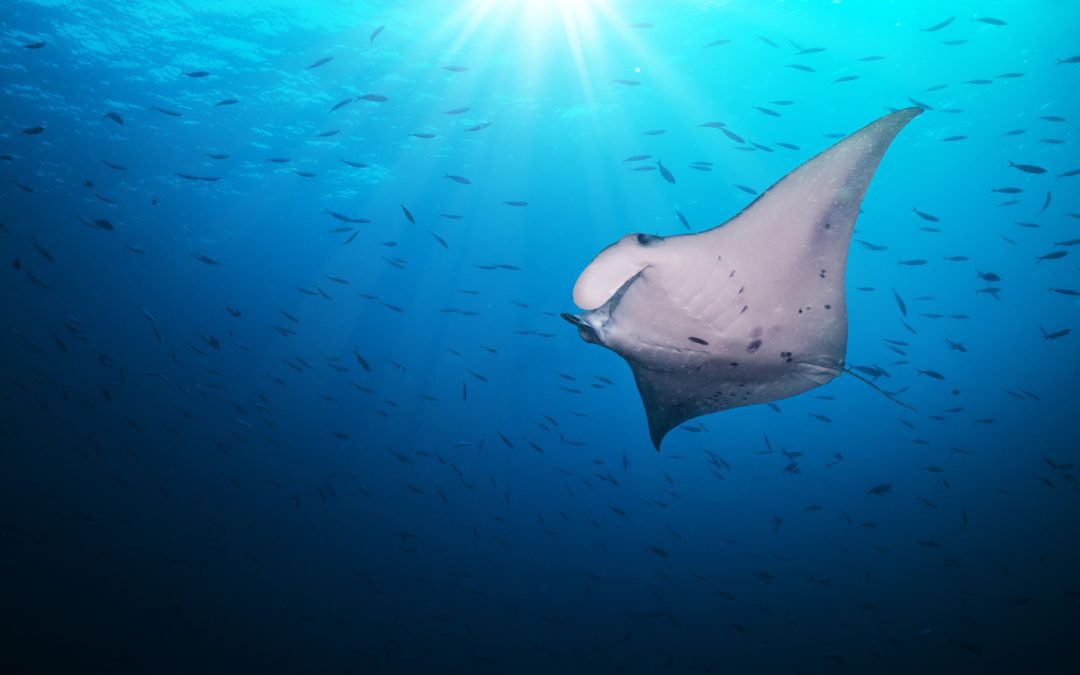A part of the Great Barrier Reef marine park and close to the mainland, scuba diving in the Whitsundays features beautiful fringing reefs full of marine life, with most of the dive sites holding an “easy” rating. Many of the dive sites around the islands can be explored off the beach or straight from a charter boat.
This post will discuss dive sites you can do around the Whitsundays Islands from a bareboat charter. If you wish to dive the outer Great Barrier Reef, we suggest contacting local tour operators in Airlie Beach or Hamilton Island.
When is the best time for scuba diving in the Whitsundays?
The best conditions for scuba diving in the Whitsundays is light winds on a rising tide. Due to the calm winds, the best diving season in the Whitsundays and on the Great Barrier Reef is from mid-August to mid-December. And to really confuse you, the best visibility is in June or September.
Scuba Diving while on a skipper yourself yacht charter
A skipper-yourself yacht charter, known as a bareboat charter, is the ultimate way to experience the stunning Whitsunday Islands.
You hire a fully equipped sailing yacht or catamaran, and after an extensive training session, you can cruise the islands in your way. No boating license is required!
Bareboating is an ideal holiday for avid scuba divers. If you plan on scuba diving while chartering around the Whitsundays, we recommend you hire a catamaran for easy access to the water. Talk to our team about your intentions to dive, and they will ensure you have the right boat.
Tips for scuba diving on a Whitsunday bareboat charter
If you have your Open Water dive ticket, you can hire full dive gear from Aqua Dive at Coral Sea Marina.
When planning to scuba dive on your bareboat charter, refer to your copy of 100 Magic miles on your vessel. Some specific dive sites may require you to anchor or moor at an approved location and take your tender to the site. At other sites, you can dive from the beach or your yacht.
We encourage charterers wishing to scuba dive in the Whitsundays to research the sites they want to explore extensively, taking note of currents, winds and recent weather events. The Wanna Dive website is a fantastic resource.
If you plan to add scuba diving to your bareboat adventure, it’s a good idea to ensure your insurance covers it.
For those who are not interested in diving but still want to experience the underwater world, you will find many snorkelling sites scattered around the islands. Whitsunday Rent a Yacht provides snorkels, masks and fins free of charge for everyone on a bareboat holiday. Check out the 10 best-snorkelling sites in the Whitsundays for your itinerary planning.
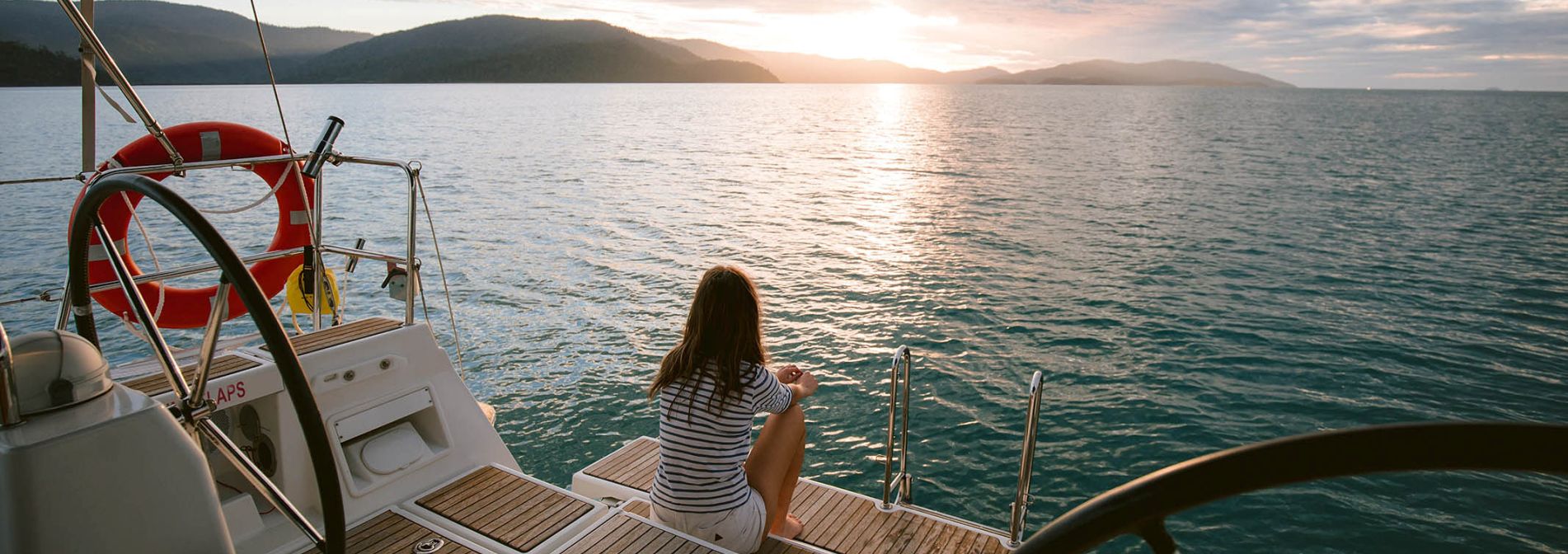
8 Dive Sites in the Whitsundays
If you’re short on time or only have a day for diving, go to the most popular diving sites in the Whitsundays around Hayman and Hook Island. These northern islands have ample fringing reefs and impressive rock formations, perfect for new or experienced scuba divers.
The famous Woodpile Dive Site, northeast point of Hook Island
Visibility: 4-15 m Diving Depth: 5 – 30 m
The Woodpile is an unusual rock formation creating the best wall dive in the Whitsundays. The wall drop ranges in depth from 5m to a drop of nearly 30 meters at the point.
Start your dive about halfway between the beach and the point where you will see corals along the wall to about 5-7 meters. As you go deeper, the corals disappear, but there are some magnificent caves and rock ledges to explore. Away from the wall are lots of coral bommies and massive corals.
Beware of the strong currents around the point and don’t dive on spring tides. Due to being exposed to northerlies and swells from strong easterly winds, visit this site when there is little wind.
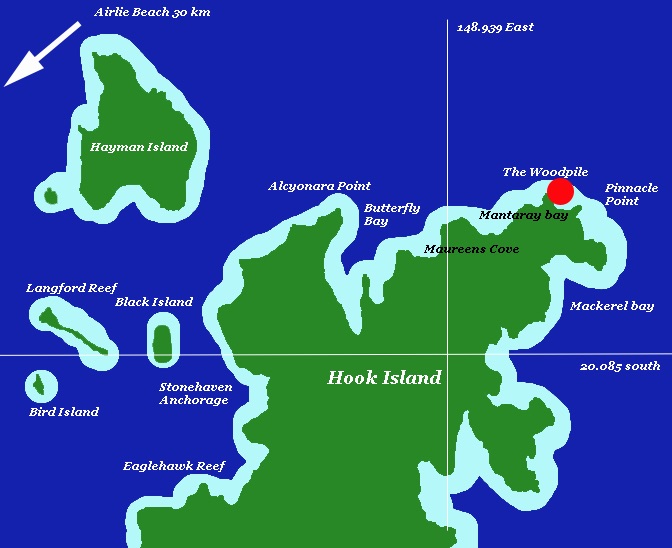
Map c/o The Whitsundays Dive Centre
The famous Pinnacles Dive Site, northeast Hook Island
Visibility: 9-15 m Diving depth: 3-18 m
The Pinnacles is not far from The Woodpile. It’s one of the most famous scuba diving sites in the Whitsundays because its hard corals are similar to the outer Great Barrier Reef.
The best diving is on the western beach, adjacent to the Woodpile – swim east at a depth of 7-15 meters. You’ll see substantial coral bommies reaching to the surface and corals in the shape of boulders and towers. From May to September, manta rays frequent the area.
Manta Ray Bay Scuba Diving Site, Hook Island
Visibility: 3-15 m Diving depth: 3-15 m
If you want to dive amongst loads of fish and hard and soft corals, Manta Ray Bay is the spot. A good site for beginners with excellent wind protection, the bay contains a variety of underwater valleys, caves and tunnels with abundant fish living throughout. You can’t miss the enormous local Maori wrasse residents and the manta rays from May through September.
You will find two massive underwater sculptures at Manta Ray Bay. “Migration of the Mantas” by Brian Robinson and “Manta Ray” by Adriaan Vanderlugt have been installed as part of the Ngaro Underwater Marine Sculpture Trail, an Australian first. Enjoy seeing the marine environment interact and merge with these vast artworks.
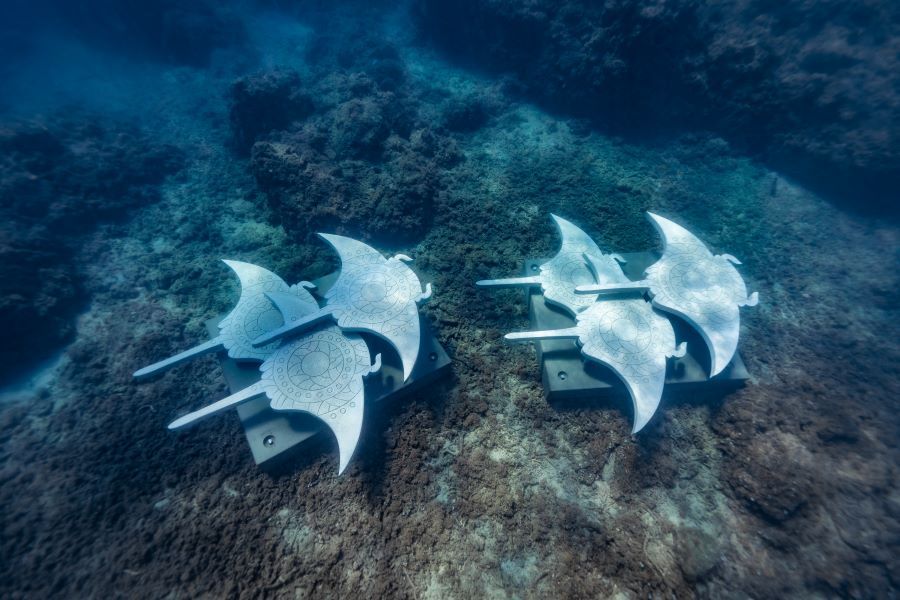 Photo Credit Riptide Creative – Phill Gordon
Photo Credit Riptide Creative – Phill Gordon
Mackerel Bay Dive Site, East Hook Island
Visibility: 2 -10 m Diving depth: 5-12 m
Mackerel Bay is a popular protected dive site in northerly winds; however, visibility can vary. The shallow waters have a good coral cover with some scattered bommies around 7m, creating a maze to swim through. You will find relatively shallow diving suited to beginners with small canyons and ledges housing a variety of fish to keep you entertained.
Avoid diving here in the southerlies.
Scuba diving at Blue Pearl Bay, Hayman Island
Visibility: 3-15 m Diving depth: 3-18 m
The best diving is off the southern end of the beach, heading towards Castle Rock. You’ll find shallow ledges dropping off to a 15-meter wall. The wall has caves and canyons to explore, creating a maze of coral structures to dive through.
There are strong currents at Castle Rock. Avoid this area at all times.
You can also dive off to the right of the beach to explore coral gardens as you head towards Dolphin Point. There is excellent protection from all winds except the north-westerlies. Check out the Maori Wrasse sculpture installed in the bay as a part of the Ngaro underwater marine sculpture trail.

Photo Credit Riptide Creative – Phill Gordon
Scuba diving Dolphin Point, northwest point of Hayman Island
Visibility: 3-15 m Diving Depth: 5 – 18 m
On the northern end of Hayman, you will find a deep dive at Dolphin Point. There are lots of large fish varieties to see with an exciting dive amongst massive rock slabs, the odd swim through and coral bommies as large as 15 m.
While there is protection from most winds except the northerlies, you still need a calm day to dive here because of the currents. Occasionally sharks are sighted in the area due to the abundance of large fish that frequent the deeper parts of the ocean. Make sure you are Sharksmart.
Scuba diving Cateran Bay, North Border Island
Visibility: 2-12 m Diving depth: 2-12 m
Cateran Bay on Border Island is one of the best anchorages in the Whitsundays. You can dive straight from the moorings in light wind conditions. There are plenty of gullies and ledges to explore, with the best dive sites on either side of the bays’ entrance. Inside the bay, currents are minimal. However, be aware that currents pick up at the entrance, particularly on the northwest tip.
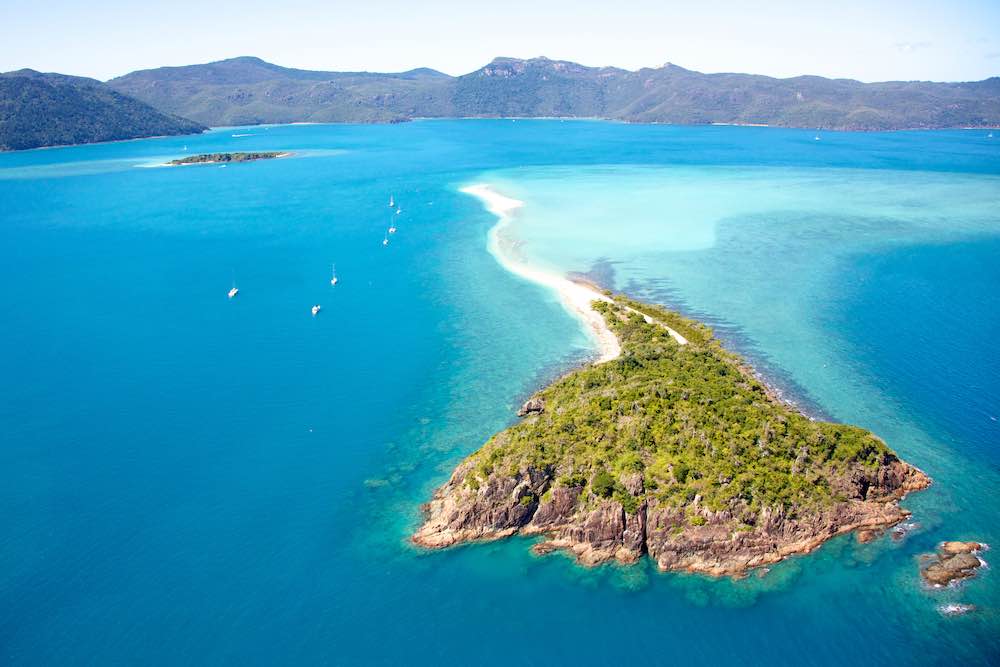
Scuba diving at Langford Spit
Visibility: 2 -10m Diving Depth: 3 – 15m
Langford Spit is a popular day stop for Whitsunday charter boats. The great thing about diving from Langford the sand spit is you can base yourself on the beach with your yacht not far away. The sandy bottom scattered with coral bommies gradually slopes from the beach to 15 meters.
The best diving is from the northern-west end of the beach, where you will find a maze of bommies and a lot of little fish to keep you company. Expect tidal currents most of the time and reasonable wind protection in most conditions.
It’s hard to imagine anything more perfect than scuba diving the Whitsundays from your private yacht charter. But no matter your mode of transport, you’re sure to enjoy the ease and wonder of diving deep into the underwater world of the Whitsundays Islands.
Join us, dive the Whitsundays and enjoy the freedom to explore
Contact us 1800 075 000 or sales@rentayacht.com.au

